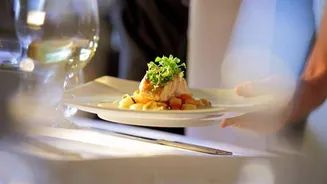Chaos to Calm
Mealtimes, for many families, can be a battleground of noise and disarray. This often leads to feelings of stress and frustration for parents, and an overall
negative experience for everyone involved. Simple tools like a table manners checklist can be very effective. This simple but effective approach promotes a more structured, pleasant, and positive family dinner time. This in turn, fosters a more relaxed atmosphere where conversation, connection, and good eating habits can flourish, instead of being a daily struggle.
Setting Expectations Early
Establishing clear expectations at the outset is essential for cultivating good table manners. Children thrive when they understand the rules and what is expected of them. Before the meal begins, it is advisable to discuss a few key table manners. Remind children of basic etiquette, such as using utensils, keeping elbows off the table, and speaking politely. These consistent reminders, combined with positive reinforcement, help children internalize appropriate behavior. This proactive approach sets the stage for a more harmonious meal, providing a framework that everyone can understand and follow. It also helps instill a sense of respect and responsibility.
Table Manners Checklists
A table manners checklist provides a visual and straightforward way to guide children. It serves as a reminder of the various manners expected during mealtime. The checklist may include items such as, 'Wash your hands,' 'Wait until everyone is served before starting,' 'Eat with your mouth closed,' and 'Ask to be excused.' These lists are highly customizable, so parents can tailor them to the specific ages and needs of their children. Consider posting the checklist in a visible location, like on the refrigerator, to make it easily accessible. This is especially helpful during the initial stages of implementing these practices. Reviewing the checklist together before each meal reinforces the expected behaviors and makes it a fun family activity.
Positive Reinforcement Techniques
Encouraging positive behavior is key for helping children develop good table manners. Praise and rewards are very effective tools. Recognize and commend children when they exhibit the desired behaviors, such as saying 'please' and 'thank you,' using their utensils properly, or engaging in pleasant conversation. Positive reinforcement makes children feel appreciated and motivates them to continue demonstrating good manners. Instead of focusing on punishments, redirect negative behaviors with gentle corrections and reminders. For example, if a child is reaching for food, you can calmly remind them to wait until everyone is served. This approach focuses on teaching and shaping the behavior, creating a positive learning experience for everyone.
Creating a Positive Atmosphere
The atmosphere at the dining table greatly impacts the mealtime experience. Parents should strive to create a relaxing and enjoyable environment. Turn off the television, put away phones, and make mealtimes a screen-free time to allow for meaningful interactions. Encourage lighthearted conversations and share stories, fostering a sense of connection and bonding. Involve children in setting the table, picking out placemats, or selecting music. Such involvement gives children a sense of ownership. A positive environment makes mealtime a welcome part of the day and strengthens family relationships. This leads to enjoyable mealtimes, where children learn not just good table manners but also the value of togetherness.
Consistency is Key
Consistency in applying these strategies is vital to their success. Establishing consistent routines and expectations reinforces the desired behaviors. Be patient and understand that it takes time for children to learn and adopt new habits. Encourage children to practice these manners regularly, not just during family meals, but also in other social situations. This consistent approach ensures that children internalize the expected behaviors and integrate them into their daily lives. Over time, these practices become second nature, and family mealtimes transform from being chaotic to being a source of connection and enjoyment for everyone.
Adjusting to Age
The method of implementation should be adjusted to the child's age. For younger children, keep the checklist simple and use visual aids, like pictures or symbols, to assist their understanding. Younger children benefit from positive reinforcement and lots of encouragement. For older children, you can have a more detailed checklist. Allow them to take more responsibility and engage in conversations about table manners and their importance. Adapting the approach to match the child's developmental stage ensures that the process remains relevant and effective. This flexibility not only caters to the specific needs of each child but also creates an environment conducive to learning and the development of good manners.












